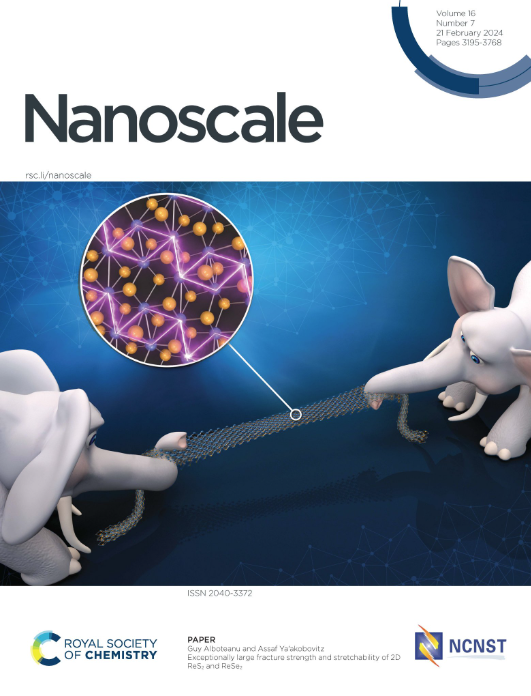Cuticular Proteins (Crusticuls) affect 3D Chitin Bundle Nanostructure
IF 5.8
3区 材料科学
Q1 CHEMISTRY, MULTIDISCIPLINARY
引用次数: 0
Abstract
The crustacean exoskeleton features a micrometric, three-dimensional chitin scaffold. The intricate organization of this structure makes it an ideal model for investigating scaffold proteins at the nanoscale. Periodic exoskeleton replacement during a rapid and punctual molt cycle involves proteins that govern exoskeleton formation. Relying on binary expression pattern analysis of a molt-related transcriptomic library generated from the cuticle-forming epithelium of the crayfish Cherax quadricarinatus, a family of crustacean cuticle structural proteins termed ‘crusticuls’ was discovered and shown to present an exoskeleton formation-related expression pattern. All nine crusticuls include a chitin-binding domain bordered by two acidic residue-rich regions, putative functional domains related to exoskeletal formation and biomineralization. Crusticuls knock-down via RNAi resulted in over 95% reduced relative expression in treated versus control crayfish, with phenotypic effects ranging from prolonged molt cycles to lethality. Crusticuls were largely absent from newly formed cuticles following knockdown, resulting in exoskeletal deformities in the three-dimensional organization of chitinous bundles at the micro- and nanometric scales. These structural alterations were phenotypically translated into changes in cuticular hardness and elasticity. The identification of crusticuls as being key for proper nanometric three-dimensional organization of cuticular chitinous scaffolds opens new avenues for synthetic scaffold bio-mimetic applications.表皮蛋白(Crusticuls)影响三维几丁质束纳米结构
甲壳类动物的外骨骼具有一个微米级的三维几丁质支架。这种结构的复杂组织使其成为研究纳米级支架蛋白的理想模型。在快速而准时的蜕皮周期中,外骨骼的周期性更换涉及到控制外骨骼形成的蛋白质。通过对小龙虾(Cherax quadricarinatus)角质层形成上皮中与蜕皮相关的转录组文库的二元表达模式分析,发现了一个名为“crusticuls”的甲壳类角质层结构蛋白家族,并显示出与外骨骼形成相关的表达模式。所有9个外壳都包括一个几丁质结合结构域,该结构域与两个酸性残基丰富区域接壤,这些区域被认为与外骨骼形成和生物矿化有关。通过RNAi敲除外皮导致处理过的小龙虾相对于对照减少95%以上的相对表达,其表型影响从延长蜕皮周期到致死。在敲除后,新形成的角质层中大部分缺失了角质,导致几丁质束在微观和纳米尺度上的三维组织出现外骨骼畸形。这些结构改变在表型上转化为角质层硬度和弹性的变化。表皮几丁质支架纳米三维组织的关键是表皮几丁质支架的鉴定,这为仿生合成支架的应用开辟了新的途径。
本文章由计算机程序翻译,如有差异,请以英文原文为准。
求助全文
约1分钟内获得全文
求助全文
来源期刊

Nanoscale
CHEMISTRY, MULTIDISCIPLINARY-NANOSCIENCE & NANOTECHNOLOGY
CiteScore
12.10
自引率
3.00%
发文量
1628
审稿时长
1.6 months
期刊介绍:
Nanoscale is a high-impact international journal, publishing high-quality research across nanoscience and nanotechnology. Nanoscale publishes a full mix of research articles on experimental and theoretical work, including reviews, communications, and full papers.Highly interdisciplinary, this journal appeals to scientists, researchers and professionals interested in nanoscience and nanotechnology, quantum materials and quantum technology, including the areas of physics, chemistry, biology, medicine, materials, energy/environment, information technology, detection science, healthcare and drug discovery, and electronics.
 求助内容:
求助内容: 应助结果提醒方式:
应助结果提醒方式:


